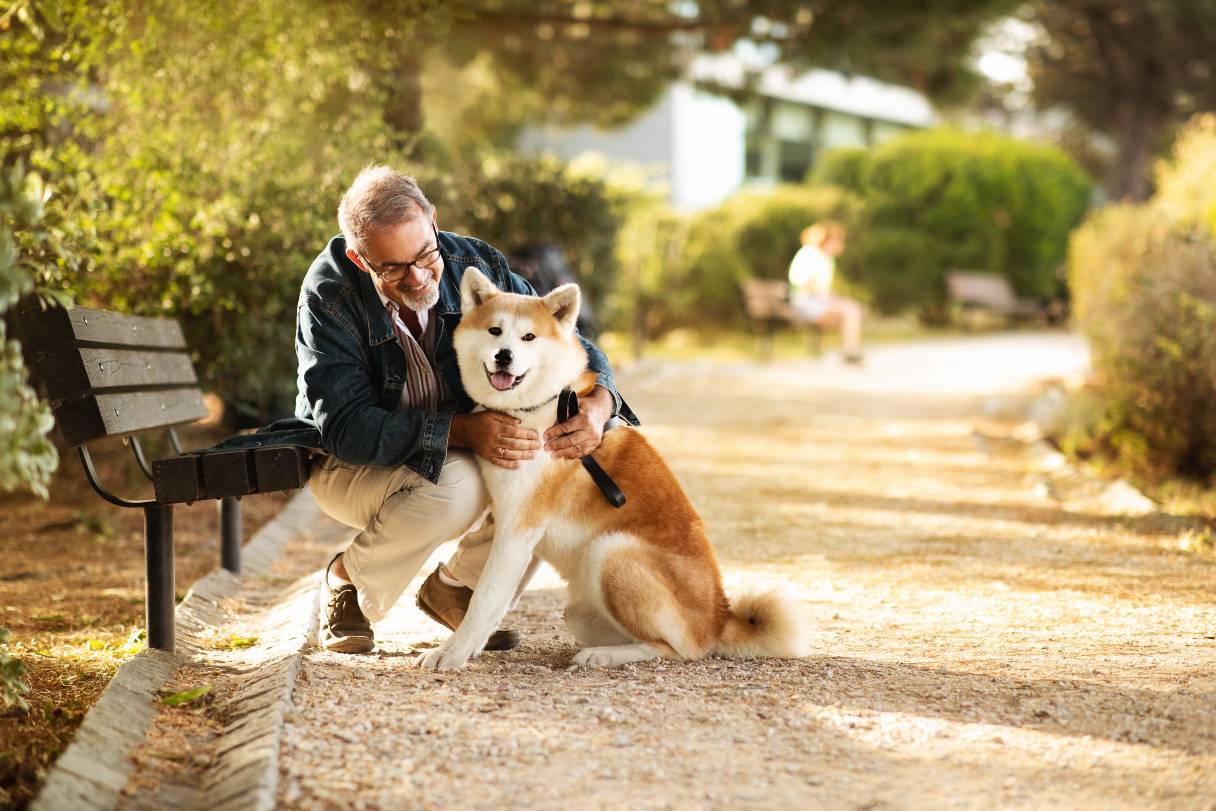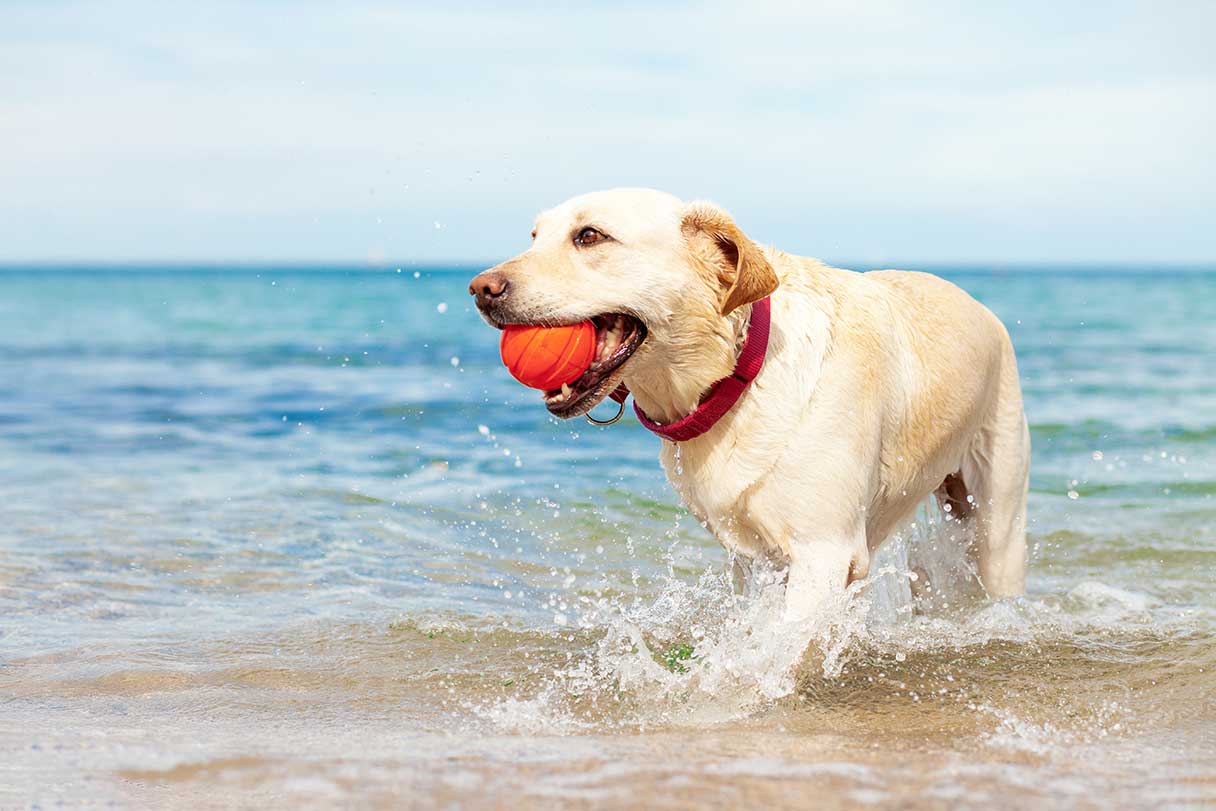The thought of a dog losing a leg can be daunting for pet parents, but dogs have an incredible ability to adapt. Unlike humans, they don’t dwell on what’s missing — instead, they focus on moving forward, often bouncing back with the same enthusiasm and zest for life.
More often than not, a necessary leg amputation will help your dog feel better and improve their quality of life.
Why Your Dog May Need a Leg Amputation
A leg amputation is a surgical procedure that removes all or part of a dog’s leg. This may be done to treat several different conditions, including:
- Cancer
- Chronic pain
- Congenital limb malformations
- Paralysis
- Severe infection
- Severe leg trauma or injury
In cases like cancer, severe trauma or infection, acting quickly to remove the leg could be lifesaving. In other situations, such as chronic pain or paralysis, removing the affected leg could vastly improve your dog’s quality of life.
Types of Leg Amputations
Amputations may be either full or partial. Here’s more on what that means:
Full leg amputation
The most common type of dog leg amputation involves the removal of the entire leg. For a front leg, it may be removed at the shoulder, leaving an incision along the chest. A hind leg amputation may include the entire leg up to the hip joint or as high as the top part of the thigh bone.
Veterinarians have traditionally opted to remove the entire leg for several reasons. This approach helps ensure that any cancer or infection is fully eliminated. Additionally, dogs often adjust more quickly to life on three legs when no part of the fourth limb remains.
Partial leg amputation
A newer option available to some dogs is a partial amputation, in which only the affected part of the leg is removed. This is typically done with the intent of fitting the dog with a prosthesis. This type of amputation is a more involved surgery with a longer recovery time and more intensive daily wound care. It’s also more expensive, with physical therapy in addition to the cost of both the surgery and the prosthetic.
A partial leg amputation, in combination with a prosthetic device, is typically recommended for dogs who are obese or who have other mobility issues or health problems that would make it difficult for them to walk on three legs.
How Much Does a Dog Leg Amputation Cost?
The cost of a full dog leg amputation procedure ranges from $700 to $1,200 at one clinic1 and from $1,500 to $1,850 at another2 but varies widely based on location. Pricing can include a pre-op exam and blood work, IV, postoperative care, pain management and other medications, if needed, in addition to the procedure itself.
Prices vary from one clinic to the next, so you should discuss with your vet what’s included in the final cost, as well as any additional fees, such as hospitalization or physical therapy, that you may incur.
Other factors that can affect the actual cost include the type of clinic where the surgery takes place, the size of your dog and the type of veterinarian or specialist performing the surgery.
Average cost for dog leg amputation by size/weight
Here’s the general cost of a full dog leg amputation by dog size and weight:
| Type | Under 50 pounds | 50 pounds and up |
|---|---|---|
| Full leg amputation | $700 to $9001 | $1,2001 to $1,8502 |
Keep in mind that a partial leg amputation can be significantly more expensive than a full amputation, especially when factoring in the cost of a prosthetic or mobility aid. If the amputation is due to a tumor, your vet may also recommend a biopsy and follow-up treatments like chemotherapy or radiation to improve your dog's prognosis. These additional treatments can substantially increase the overall cost.
Will Pet Insurance Cover Your Dog’s Leg Amputation?
Yes, most pet insurance accident and illness plans cover the costs of surgery related to illness or injury, as long as it’s not a preexisting condition. You should check the details of your pet’s coverage plan or talk to a representative from your pet insurance provider to be certain whether your dog’s amputation would be covered.
How Does Leg Amputation for Dogs Work?
If your vet determines that your dog needs an amputation, they’ll evaluate your dog for any issues that could influence their recovery and work with you to develop a plan to help things go smoothly. Issues might include:
- Joint or orthopedic problems
- Neurological conditions
- Other mobility issues
Preparation
If your dog is obese, your vet may put them on a weight loss plan prior to surgery. They may also make recommendations regarding mobility aids or physical therapy to help aid your dog’s recovery.
Procedure
Prior to surgery, the vet will most likely do a preoperative exam and blood work to make sure it’s safe for your pet to undergo anesthesia. Fur will be shaved from the area around the incision.
During the procedure and afterward, your pup will be closely monitored for complications, and pain medications will be delivered intravenously. In cases of cancer or infection, the amputated leg may be sent to a lab for testing.
Your pet may need to remain in the hospital for monitoring for up to a week, depending on how quickly they’re able to regain mobility. During their stay, they’ll be transitioned from IV medication to oral medication that you’ll be able to continue giving them at home. They may also be prescribed antibiotics if infection is a concern.
Aftercare
When your pet is discharged and sent home, the clinic will provide any medications needed as well as detailed instructions for caring for their stitches and any follow-up appointments that may be necessary. They will also need to wear an e-collar to prevent them from licking or chewing the sutures. Some vets will provide an e-collar, but this isn’t always the case, so you should ask your vet about this before surgery.
Possible Side Effects of Leg Amputation
Complications after a leg amputation aren’t common, but there are a few that you should watch for and report to your vet if they occur. These include:
- Fluid buildup and swelling near the bottom of the stump
- Hemorrhage (while excessive bleeding is uncommon, it can sometimes happen after a rear limb amputation)
- Infection at the suture site
- Minor bruising at the incision site
- Neuroma (small lumps formed from severed nerves that can cause pain)
Bruising and swelling typically resolve on their own, but you should contact your vet if they continue past several days or seem excessive. Neuromas are a rare amputation side effect, but if they do occur, you can talk to your vet about treatment options.
It’s important to keep your dog’s bedding clean, follow your vet’s instructions on wound care and make sure your pup wears their e-collar. Not doing so can lead to infection, signs of which include redness and inflammation, swelling and discharge. If you notice any of these at the suture site, you should contact your vet immediately.
Helping Your Dog Recover and Adapt
You’ll need to restrict your dog’s exercise and movement for the first few days after surgery and encourage them to rest. You should keep them away from stairs and slippery floors as much as possible, and in the beginning, you’ll need to use a sling to help steady them when they walk and go potty. It may take them several days to discover their new center of gravity and learn how to balance on their own — and keep in mind that this may take longer with a front leg amputation than with a missing back leg.
Once your dog begins to move with confidence, you can phase out the sling and start allowing them to move around on their own. But they still need to take it easy. It’s important to go slowly and allow several weeks before returning to their normal activity level, allowing them plenty of time to fully heal and adapt.
Arthritis and other joint health issues can affect dogs with amputations more severely. Because of this, it’s important to maintain your dog at a healthy weight following an amputation. Talk to your vet about how much and what type of food you should feed your pup. Once they’re fully healed and able to move with confidence, encourage them to get plenty of exercise.
The Takeaway on Leg Amputations for Dogs
While the idea of your dog losing a leg might be upsetting, dogs with amputations typically go on to lead happy, healthy and active lives. A leg amputation is a costly procedure, but if your dog is suffering or facing a life-threatening health issue, it could be the best thing you can do for them.
Financing Dog Leg Amputation Surgery With the CareCredit Credit Card
Your dog is your best friend, and you want to make sure they get the very best. That's why the CareCredit credit card is here to help you manage the costs of diagnostics and treatment for conditions like a dog leg amputation.* Use our Acceptance Locator to find a veterinarian near you that accepts CareCredit. CareCredit is there for you and your pet every step of the way; continue your wellness journey by downloading the CareCredit Mobile App to manage your account, find a provider on the go and easily access the Well U blog for more great articles, podcasts and videos.
In addition to pet care, you can also use your CareCredit credit card for dentistry, cosmetic, vision, hearing, health systems, dermatology, pharmacy purchases, spa treatments and so much more within the CareCredit network. How will you invest in your health and wellness next?
Expert Reviewer
Dr. Kathy Wiederkehr (Wentworth), V.M.D.
Dr. Kathy Wiederkehr (Wentworth) has been practicing veterinary medicine at pet care facilities in California since 2001. Most recently, she served as medical director of the VCA PetPoint Medical Center and Resort in Irvine. She is a graduate of the University of Pennsylvania School of Veterinary Medicine and became board-certified as a diplomate in Canine and Feline Practice by the American Board of Veterinary Practitioners in 2010.
Author Bio
Jean Marie Bauhaus is a freelance writer and novelist who has been writing pet content since 2013. Her work has appeared on Forbes.com, Hill's Pet, Chewy, AKC.org and more.







